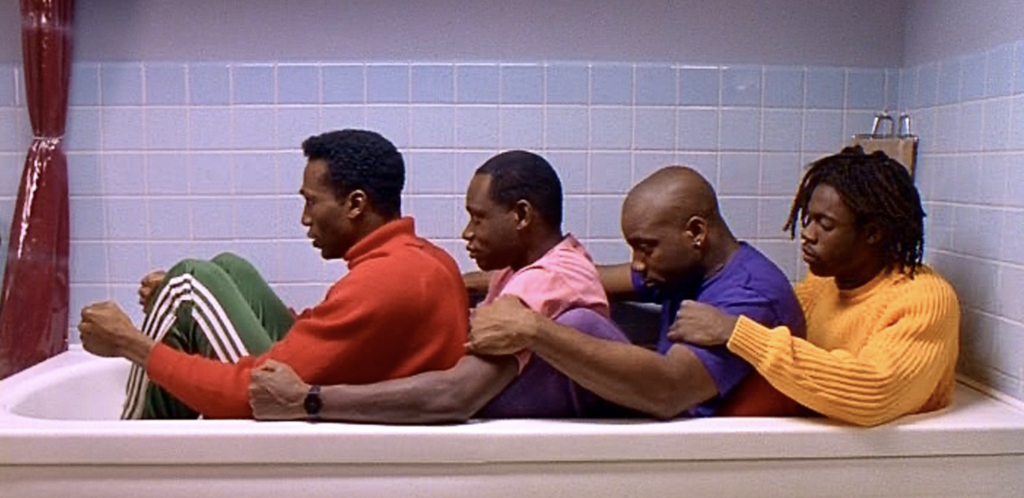
Note this article was originally published in June 2021 but has recently been updated in Dec 2022 – days after France beat England in the quarter-final of the FIFA World Cup. I wanted to take the opportunity to make a quick comment on the penalty miss pictured above. I do not believe that the main reason Mr. Kane missed was due to pressure. His body language, unlike the Spaniards who missed in the shootout a week before, seemed to be calm and composed. Also, I am aware that Gareth Southgate (coach) is a huge fan of sport psychologists and I am sure the players would have been mentally prepared. A much better explanation for the miss is technical and tactical. I assume he picked the wrong spot (high and middle) and then didn’t use the correct technique to execute this.
Introduction
It’s important to start an article entitled ‘Performing under Pressure’ by clarifying the key terms. What do we mean by both performing and pressure?
In some circles, performing is regarded as almost any action. This can range from really obvious actions, like playing a sport, to less obvious ones such as running a business. For others, the word performance is and should be much more limiting. It only applies to competitive sports and a few other areas such as the performing arts.
At Condor Performance we sit somewhere between these two extremes. For us performing is essentially just the execution of skills. With the majority of these skills being motor skills. So of course this covers all traditional sports. But our definition also includes the performing arts, military activity, and most medical and emergency procedures. And even competitive games such as chess and eSports despite the fact that there is less human movement involved in these.
Practice vs Competition
Performing really includes both the preparation and competitive sides of the equation. This is important because in many sports the word performing gets mostly used as a synonym for competing. For example, in a post-match press conference, a coach may say that she was happy with the performance. Or that the performance wasn’t quite what they were looking for. The issue with using the term performance as a synonym for on-the-day competitive outcomes is that it forgets about the performance element of preparation. As you’ll see below it is actually what you do in preparation that ultimately allows us to perform better under pressure.
In the interest of accuracy and objectivity here is the Cambridge Dictionary definition of the word performance. In summary, “how well a person, machine, etc. does a piece of work or an activity”.
So What About This Thing Called Pressure?
In my work as a sport psychologist, I often simplify and separate everything into thoughts feelings, and actions. Those who are familiar with my particular style will know that I am a big believer in predominantly learning to accept thoughts and feelings whilst still committing to our actions. When breaking down the human experience like this it can be useful to try and consider if pressure is more of an emotion or a thought or a combination.
For most performers, it will be a combination of thoughts and feelings. Consider the typical signs of experiencing extreme pressure. In terms of emotions tensing up, tightening of the muscles and nerves might be common. The thoughts that often present themselves when pressure is experienced are often predictive and negative. For example, cognitions such as “what if I mess up today” or “I just know I am going to play badly”.
Arguably the most important starting point when it comes to helping performers to be more consistent under pressure is for them to learn unequivocally that pressure is neither good nor bad. All too often athletes and non-sporting performers will regard pressure as negative. They frame it as something that will get in the way of them performing at their best. Interestingly there’s actually a small percentage who believe the exact opposite! This minority holds the view that they need some pressure to produce the goods! Do any of you want to guess why neither is true? If you do, add a comment below.
The Pressure Is Real, Just Accept It
The mindset that we are looking to help our clients develop is one whereby pressure is just pressure. It’s neither good nor bad. It can be useful for you to consider the variations in pressure as similar to other variables. Such as the weather or the colour of the opposition’s kit (shirts). These are just natural variations common in sport. It’s unhelpful to think of warmer days as being good and cooler days as being bad for example. The same applies to pressure vs. no pressure.
The most effective way of learning to perform better under pressure is by learning to accept your thoughts and feelings rather than getting into a fight with them. There are multiple ways of doing this but some of the most useful would be via these five mindfulness apps which have been approved by psychologists.
Once the process of learning to observe thoughts and emotions is underway we can move on to the next stage. That is, learning they needn’t have any impact on your desired actions. In other words, the goal is to learn to execute your skills irrespective of the thoughts and emotions you may be experiencing at the time.
This is easier said than done of course. Often experiences of pressure are much less common in training. This reduces the opportunities whereby we can prove to ourselves that we can take a penalty under the most intense pressure imaginable (below).

Mentally Harder Practice
The concept of mentally harder practice addresses this issue some of the time. MHP attempts to replicate pressure-related feelings and thoughts in training situations. The logic behind this is sound. Doing MHP in training will make it much easier to ride the pressure wave when it happens organically in competitive situations.
A nice analogy for mentally harder practice is lifting weights. If you want to be able to flip a truck tire over a dozen times then you’re gonna need to slowly increase your muscle strength in practice. The same logic applies to performing under pressure using mentally harder practice. You need to be able to slowly increase the mental demands of certain aspects of your training so when they occur in competitive situations that they are not so different from the training challenges you set up.
The weight training analogy is so useful because it quickly allows you to see the risks of overdoing it. So if you make your training psychologically too difficult, it will have the opposite effect and potentially cause some kind of psychological injury. By psychological injuries, we could be referring to genuine mental health impacts such as a trigger for depression or anxiety.
Conclusion
As we have very little influence over who stumbles across our blog posts then we would urge anybody who feels they might want to lower the risk of overdoing mentally harder practice to get in touch and be guided by one of our highly qualified and experienced sport psychologists or performance psychologists. The best way to get in touch is by completing one of the free, online Mental Toughness Questionnaires via this link here and one of the crew will get back to you in less than 48 hours.


